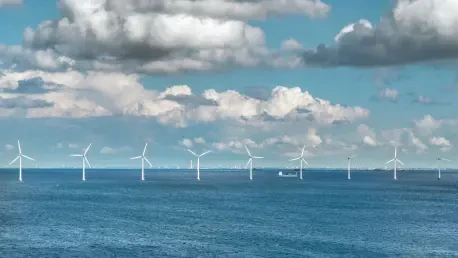In the heart of the South China Sea, where super typhoons like Yagi can unleash devastating winds and towering waves, a new frontier in renewable energy is emerging with the potential to transform how vulnerable regions harness power. Offshore wind energy, long seen as a promising solution for sustainable electricity, faces immense challenges in areas prone to extreme weather. Yet, an ambitious project by a leading Chinese renewable energy company aims to tackle these obstacles head-on. Known for its innovative approach, this endeavor introduces a floating platform designed to withstand nature’s fiercest storms while generating clean energy on an unprecedented scale. This development sparks curiosity about whether technology can truly outpace the escalating threats posed by climate change, setting the stage for a deeper exploration into its capabilities, challenges, and broader implications for global energy needs.
Breaking New Ground in Renewable Energy
Harnessing Power from the Deep Seas
The OceanX platform represents a bold leap forward in offshore wind technology, engineered to operate in deep-water environments exceeding 35 meters. This floating structure, equipped with dual turbines on a V-shaped tower, boasts a staggering capacity of 16.6 MW, enough to supply electricity to over 30,000 homes. Standing at 210 meters tall and spanning 369 meters wide, the 15,000-ton colossus is built with high-performance concrete to ensure durability against harsh marine conditions. Its design prioritizes resilience, incorporating sturdy floats and an intelligent anchoring system that stabilizes it even amidst turbulent seas. Positioned as a beacon of innovation, this technology targets regions like Japan and the Pacific islands, where traditional energy infrastructure often fails during natural disasters. The promise of a consistent power supply in such areas underscores the platform’s potential to redefine how communities access electricity when they need it most, especially during crises that disrupt conventional grids.
Engineering for Extreme Conditions
Beyond its impressive power output, the platform is specifically crafted to endure super typhoons with winds exceeding 220 km/h, earning it a reputation as a formidable adversary to nature’s wrath. Features such as dual rotors maximize energy capture, while the robust base minimizes the risk of structural failure under intense pressure. This focus on resilience addresses a critical gap in renewable energy solutions for typhoon-prone zones, where outages are a recurring nightmare. Developers have integrated cutting-edge systems to maintain stability, drawing inspiration from advanced turbine designs that prioritize adaptability. However, while the engineering feats are undeniable, questions linger about how well these mechanisms will perform over extended periods in unpredictable environments. The ability to withstand not just wind but also waves and corrosion will be pivotal in proving that this technology can deliver on its ambitious claims in real-world scenarios.
Challenges and Future Prospects
Navigating Environmental and Economic Hurdles
Despite the optimism surrounding this groundbreaking platform, significant challenges loom on the horizon that could impact its long-term viability. Unpredictable sea conditions, including relentless waves and underwater turbulence, pose risks to the structure’s integrity over time. Additionally, corrosion from saltwater exposure and potential disruptions to marine ecosystems raise environmental concerns that cannot be overlooked. The sheer scale of the platform also translates into substantial construction and maintenance costs, particularly for the complex mooring systems and underwater cables required to keep it operational. These economic barriers fuel skepticism among industry experts about whether the benefits will justify the investment in regions already grappling with limited resources. Balancing ecological responsibility with financial feasibility remains a critical hurdle that must be addressed to ensure the project’s success in transforming energy landscapes.
Paving the Way for Sustainable Resilience
Looking back, the journey of this offshore wind initiative reflected a daring blend of innovation and necessity, as it sought to provide a stable energy source for communities battered by worsening storms. Its developers, with a legacy of pioneering renewable solutions since their inception nearly two decades ago, positioned this project as a symbol of hope amid climate challenges. The dual narrative of engineering triumph and practical obstacles painted a nuanced picture of progress. Moving forward, stakeholders are encouraged to focus on rigorous testing under real-world conditions to validate the platform’s resilience and efficiency. Collaborative efforts between engineers, environmentalists, and policymakers could help mitigate risks, ensuring that economic and ecological impacts are carefully managed. As the world continues to grapple with the urgent need for sustainable power, this initiative stands as a testament to human ingenuity, with its ultimate success resting on the ability to adapt and overcome nature’s harshest tests.









